Just a few years ago, no one knew what Reezoldini was. The idea of the speakers and the speakers themselves, then custom and non-serial, appeared before the name. And now the manufacturer shows new products every year. This year, several speakers were presented at the Moscow exhibition, and the first of our two tests is dedicated to the junior bookshelf speakers. And these are, in principle, the first bookshelf speakers in the manufacturer’s line.
Reezoldini Acoustics appeared on our market recently and quite effectively. Just a couple of exhibitions ago, the manufacturer presented lines of floor and conditional shelf models – and with specialization. One is more for music, the other is more for cinema. And they turned out to be very attractive: beautiful finish, original shape and design, and noticeable sound.
At first, there were many questions: what is it and where is it from? Many were surprised that this acoustics is of Russian production, designed and manufactured at a plant in St. Petersburg. There is a team behind it, headed by engineer Anton Yulin, and all the developments are their own. The speakers are custom-made or serial Scan Speak, the cases are made in-house and on their own equipment. All assembly is carried out here: and this is not a piece production, but a serial one, albeit not large – with a good material and technical base.
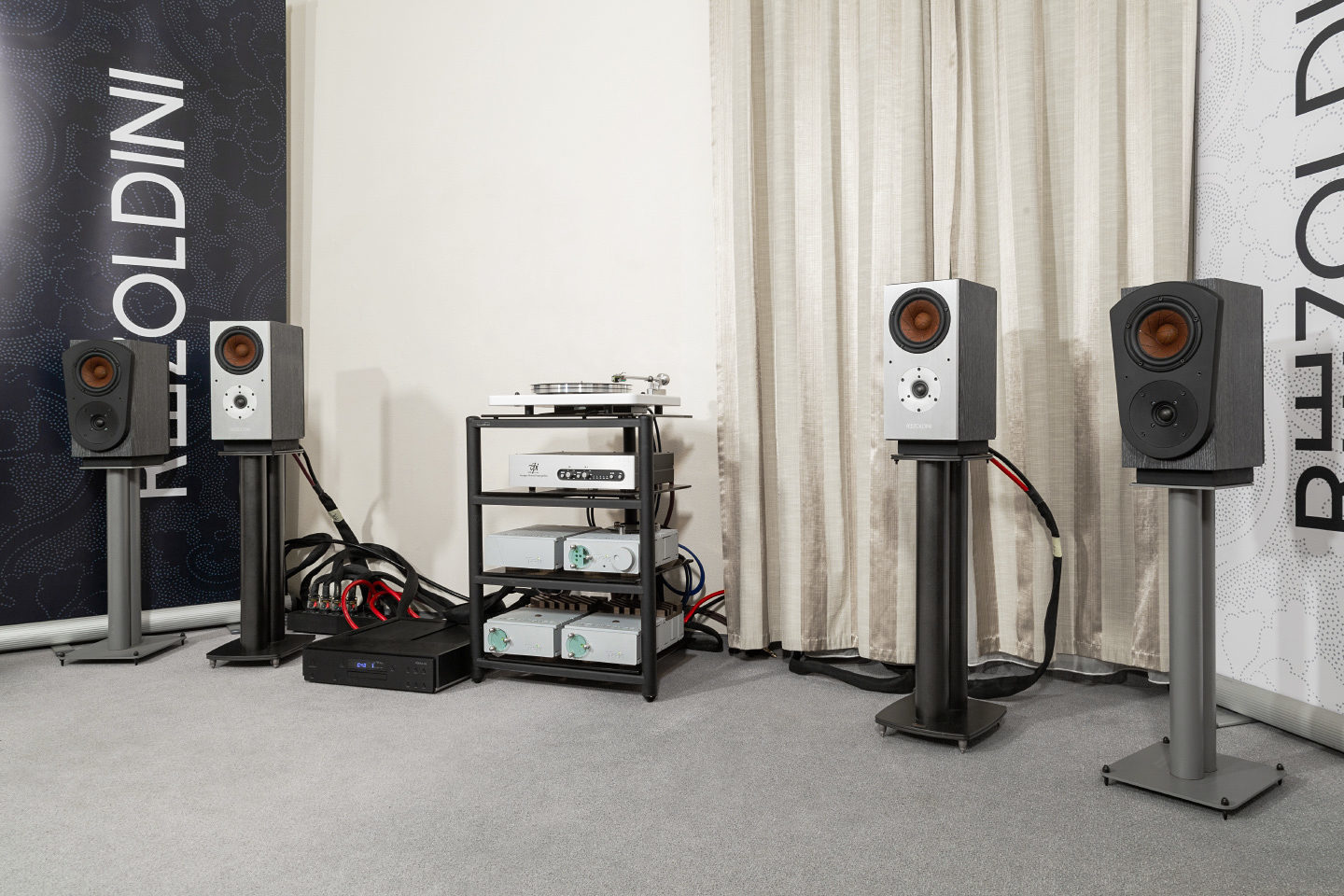
Initially, all Reezoldini acoustic models were either floor-standing or conditionally shelf-mounted, that is, rather shelf-mounted in terms of speaker configuration, but with bodies that transitioned into a stand-support. And the Jericho S4 and Master M4 shown this time are classic shelf-mounted speakers in every sense.
One manufacturer, different acoustics
First of all, I will focus on the Jericho S4 model, which complements the main, currently senior, Jericho line. A year earlier, floorstanders from this line were shown, and now bookshelf speakers. The Master line is older, but it also did not have classic bookshelf speakers until now.
As already noted, the manufacturer has some specialization of lines: for example, there is the Cinema line – its purpose is easy to guess from the name. Master has always been a rather musical line. Although the manufacturer has focused not so much on separation as on the possibility of combining. This is confirmed by several central and rear models in different lines.
But the senior Jericho line does not have a center, or perhaps not yet. But now there are classic bookshelf speakers. And I will say right away: these are not bookshelf speakers for rear channels. Of course, they can act in this role, but literally, one minute of listening is enough to understand that these models claim the position of very serious acoustics.
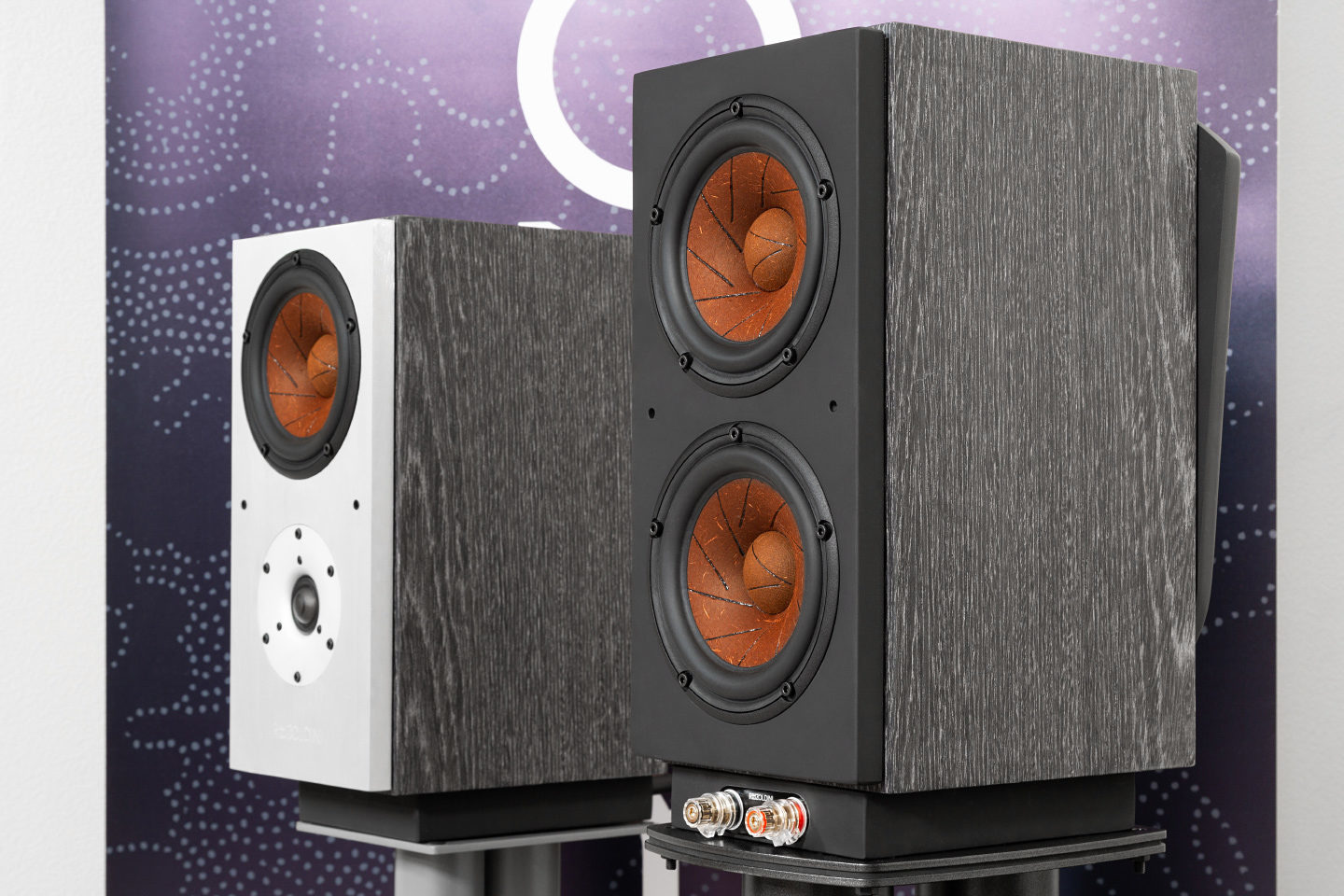
Externally, both Reezoldini Jericho S4 and Master M4 are quite similar. The same case sizes, and similar speaker configuration. But the differences here are not cosmetic – they are visible upon detailed examination and can be heard quite clearly.
In general, these are small but weighty speakers, especially for their size. The bodies are made of MDF, and the declared thickness is from 25 to 43 mm. The execution is high-quality, neat, and not devoid of recognition and elegance. Good proportions, without strange overstretching of the aspect ratio, pleasant appearance.
The finish is neat. There can be a lot of finishing options – it was recently announced that the number of veneer variations instead of the basic 44 options will exceed a couple of hundred. Plus black and white matte or glossy piano lacquer and more than one and a half thousand enamel variations according to RAL. Our own production allows us to do all this. Even on exhibition-pre-production models, the veneer is laid quite neatly – there is not a hint of handicraft.
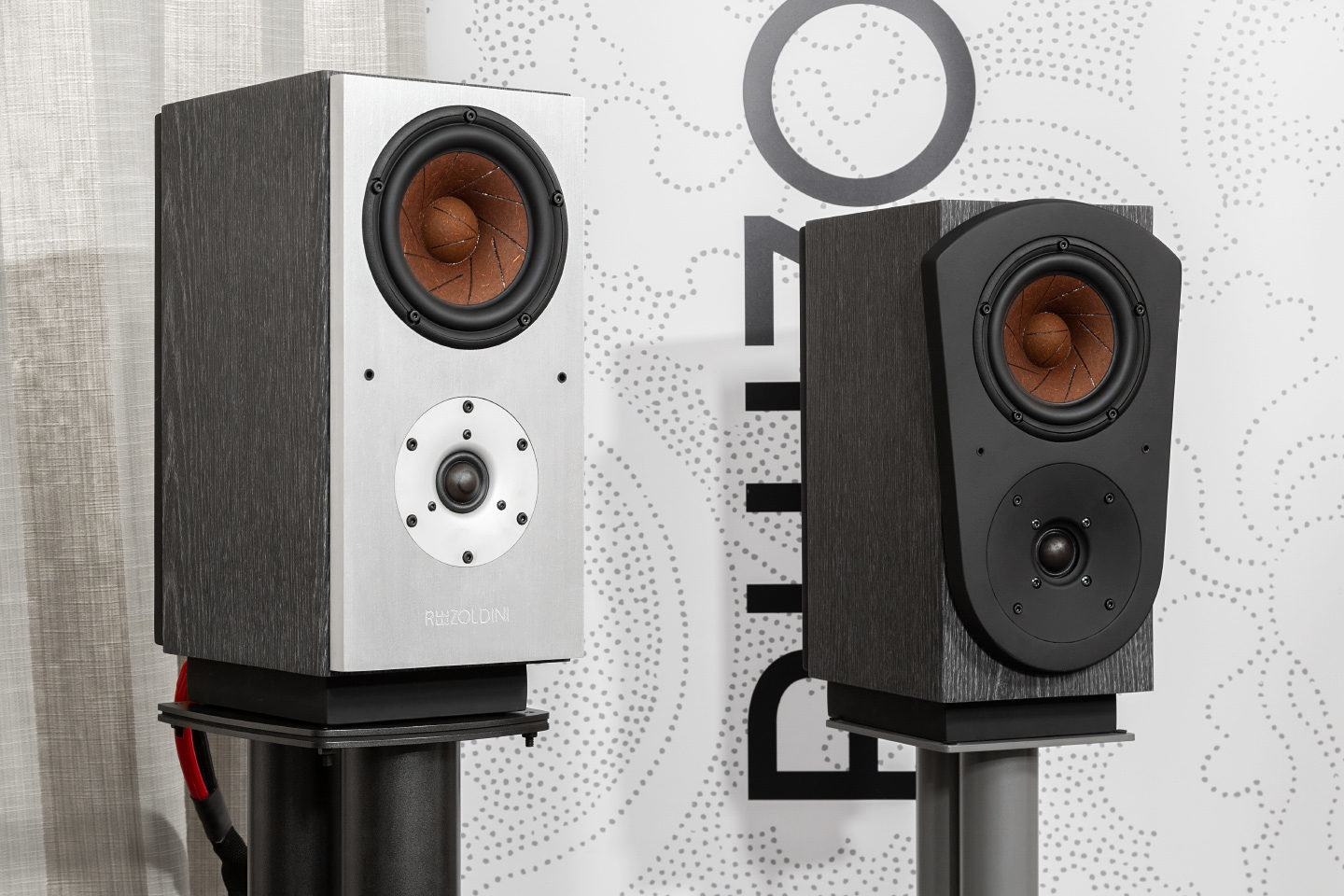
Further finishing of Jericho S4 and Master M4 differs. The former uses a solid aluminum overlay 16 mm thick on the front panel with machined landings for speakers. The manufacturer also has its own machine processing of aluminum and quite decent – this is evident both in how the speakers fit into the landings, in the edges, and the milled logo. Up close it looks a little rough, but in combination with the general texture of aluminum, which is not polished to the usual smoothness, but left more reminiscent of the surface of veneer, it turned out quite nice.
The Master M4 has a front panel made of MDF – with its triangular-rounded shape, it resembles the bodies of the older models of acoustics from the Master line.
The speakers of these two models have both similarities and differences. The midrange/low frequencies are already familiar from other models, custom-made Scan-Speak with paper diffusers of a recognizable color. The passive radiators installed on the rear surfaces look the same – in fact, they are based on exactly the same designs as for the midrange/low frequencies, but only without coils and magnets. In fact, according to the developers, this has a good effect on the consistency of work and simplifies the process of matching itself.
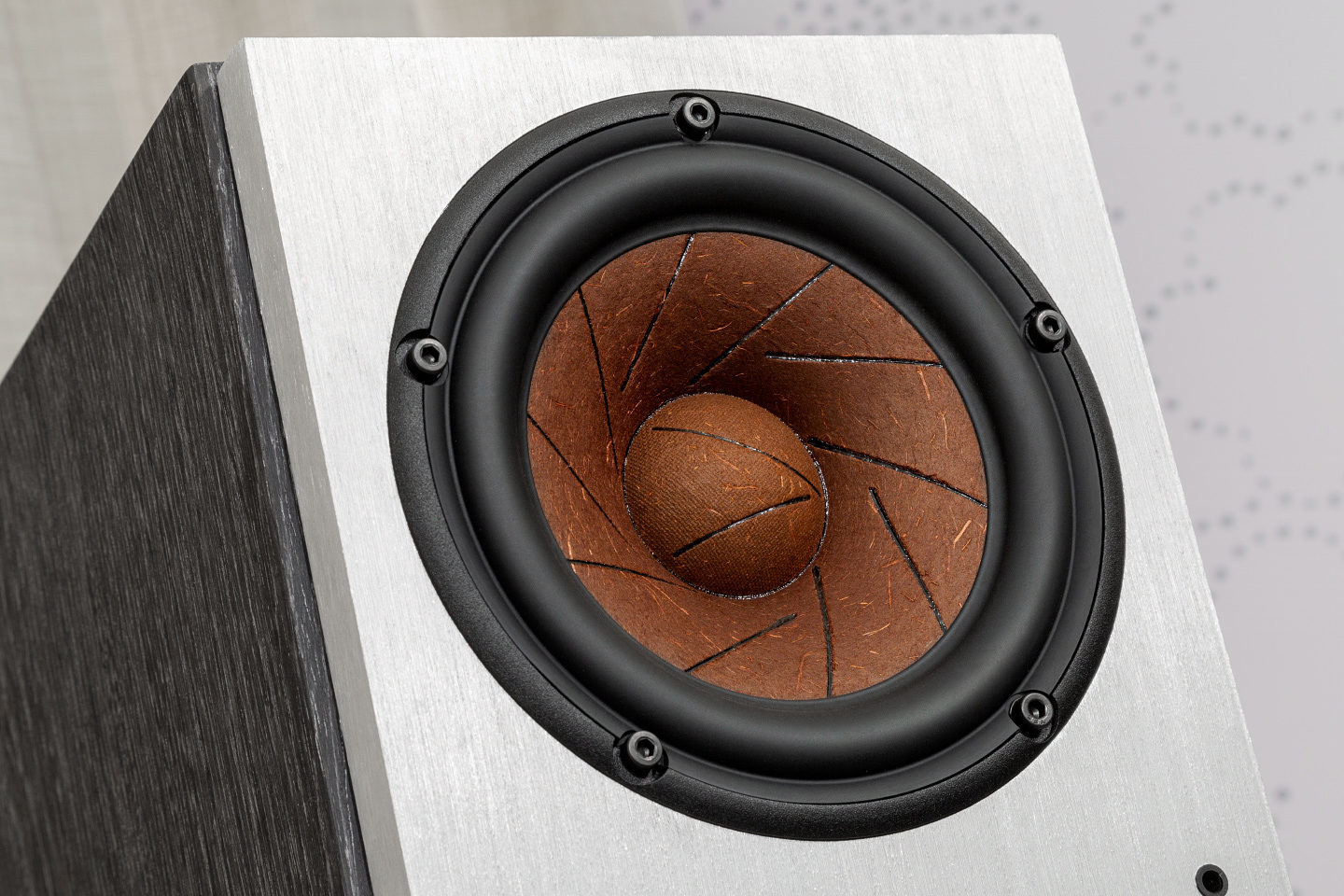
But the tweeters in the Jericho S4 and Master M4 are different. In both cases, these are Scan Speak domes from the Relevator line, but the Jericho has a smaller dome, and the moving system has a neodymium magnet. The Master also has a dome, but a larger one, recessed into a kind of horn, and with a ferrite magnet.
Crossovers differ purely technically, but they are built on the same principles and on the same high-quality element base. So I would probably not say that one acoustics is younger than the other, although formally one is more expensive, and the other is cheaper. They are simply different acoustics. But, running ahead, I will say that the recognizability of character and continuity are at a very high level. One of my friends made the following comparison at an exhibition: “These are two wines from a very good winery, but only from different grape varieties.” I think this metaphor is completely appropriate here.
Correctly set priorities
Now about the user functions. Both models have four M6 threaded fasteners at the bottom, which allows you to use spikes and all sorts of legs for decoupling or to firmly attach the speakers to the stands. The manufacturer does not have its own stands, but it is quite possible to select and adapt something serial – besides, I believe that the stands should be selected not only for the speakers by size but also by taking into account the optimal height for specific conditions.
The overall directionality of this acoustics is not the highest, but the level is such that it is worth bothering with the nuances. And, as it seems to me, a selected filled stand with a rigid mount will be optimal here. However, the design does not prohibit other options.
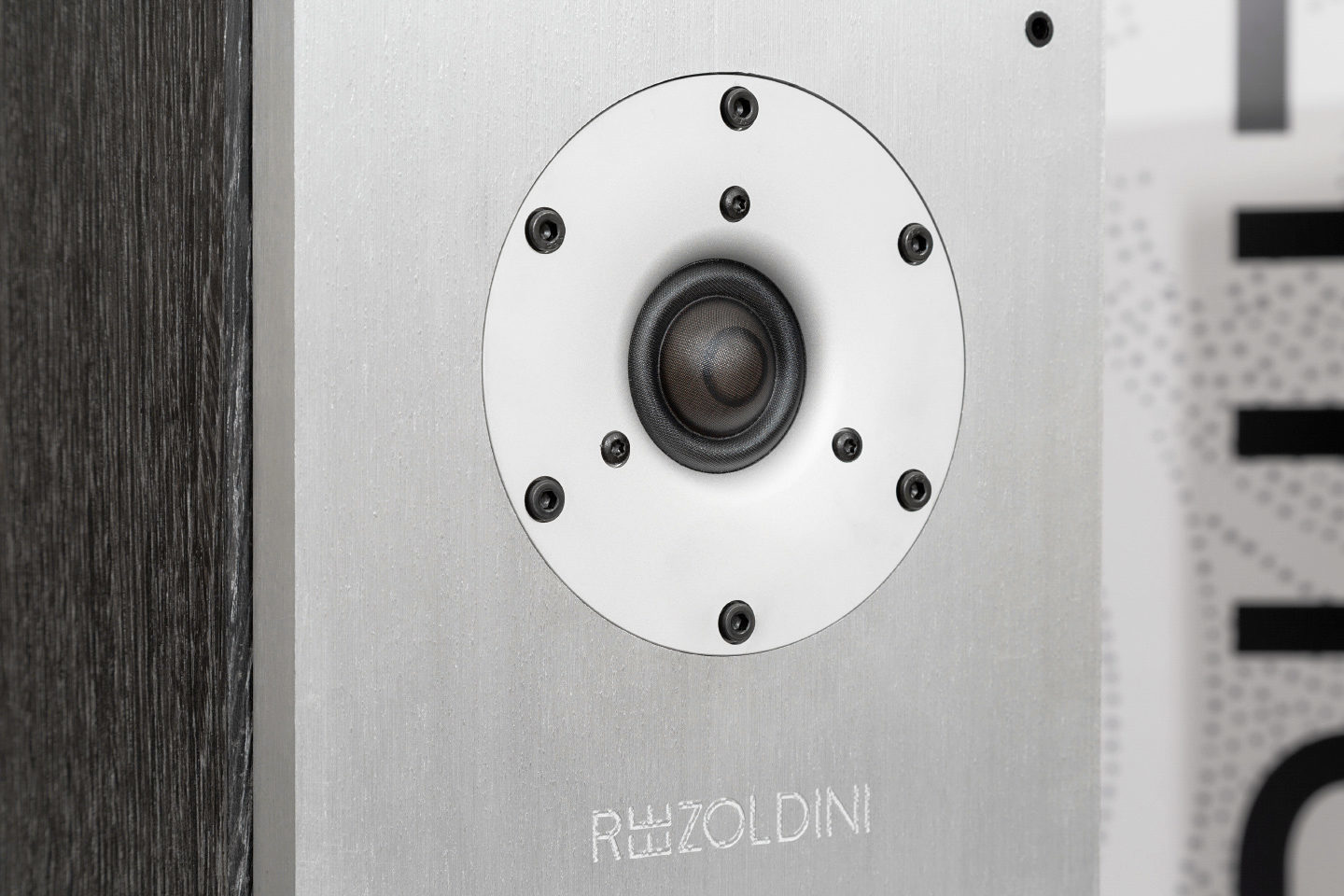
Only a classic two-wire connection is provided – using a pair of universal WBT terminals. Grills, covered with fabric and attached on inconspicuous studs, are provided for both the front panel with speakers and the rear panel with passive radiators. True, I was unable to evaluate them, since in the hustle and bustle of pre-show preparations they forgot to take them with them. However, based on observations of previous models, I do not see any potential difficulties here.
We listened to the acoustics in the same conditions – in combination with Tarim Audio amplification and Aesthetix Romulus as a digital source. And with partial cable binding Reezoldini is a new direction, but the manufacturer’s acoustic cables have taken on a completely serial form and appeared in the catalog. In the format of a full-size test, I listened to Reezoldini Jericho S4 and then switched to Master M4 to understand the difference and compare impressions.
There are two main first impressions. Firstly, the volume, scale, and bass are completely unexpected for small-sized acoustics. And this is not a forced sound, but a full-bodied, full-size, and dynamic one.
The second thing I immediately noticed was very good intelligibility and detail, and not only on the example of familiar recordings from my personal music library. In the presentation, I could easily hear the sound of familiar components and Tarimov amplification, as well as the fairly familiar Aesthetix Romulus. The feeling that everything is transparent, clear, and visual. But at the same time – without excessive disassembly into components.
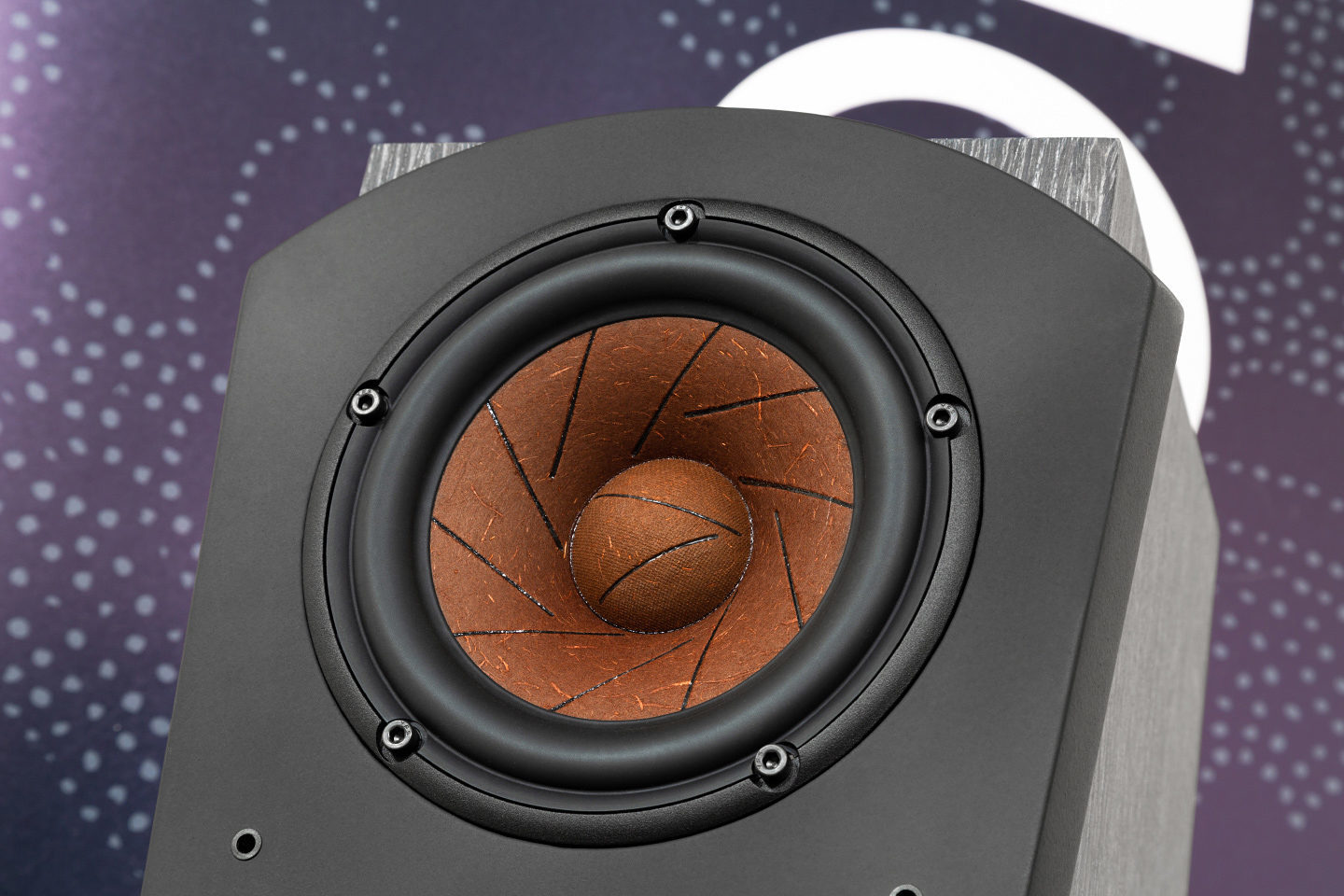
I started listening to Thelonious Monk’s collection “Standards”. Good detail and emotional delivery are immediately noticeable. The acoustics have an expressive character, moderately powerful, but at the same time neat. Dynamics are felt, but there is no sense of haste or simplification for the sake of expression. The sound is moderately light, without warmth, but without distortions or obvious coloring.
At low volume, the mid/high range stands out a little more clearly, but even then the acoustics play very well – the sound not only does not become flat but does not show any obvious shortcomings at all. However, it is difficult to judge based on this recording, and these are only the first conclusions. Later, it will be necessary to evaluate the ability to play quietly on some orchestral recordings. Reezoldini Jericho S4 and Master M4 bookshelf speakers
In the general character of the sound, it is noticeable that the acoustics emphasize the main tones. However, it does not neglect the after-sounds, which are also given their due. But the sometimes encountered audiophile effect, when the main tones are presented dull, and the after-sounds are drawn out and savored – is not there at all. So we can say that in this regard, the priorities are set correctly.
The stage is larger, wider, and deeper than expected. The effect of filling the room with sound is very good, but at the same time (with an adjustment for the specifics of the room) it still turns out not to be some volume, but a stage with a completely correct layout. There is not much air, but I would not rush to conclusions here. It is not the first year that our Moscow exhibition is held in rooms where the sensation of air in sound is weaker even with the acoustics that are guaranteed to give it.
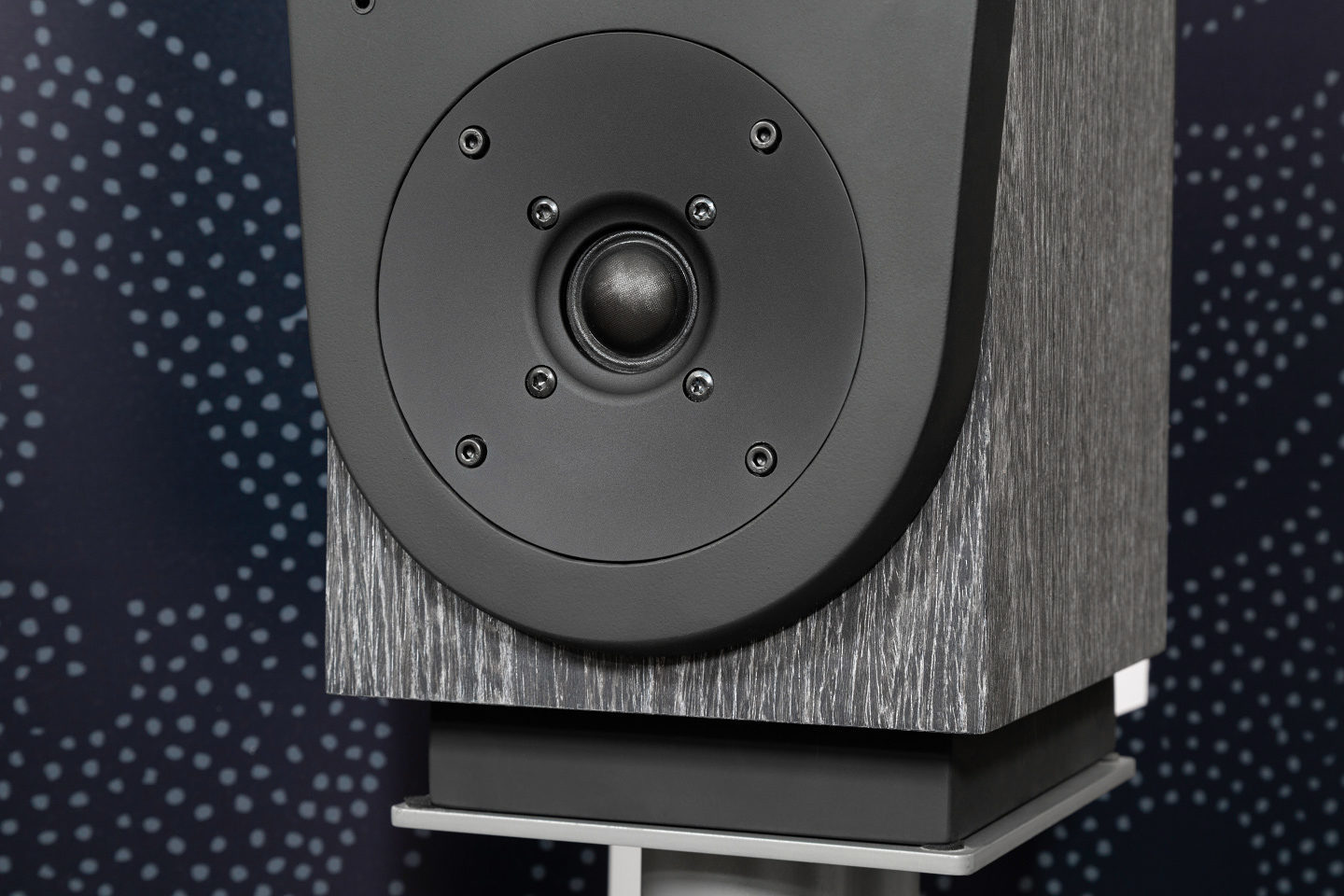
The scale exceeds all expectations
The next recording is Hank Jones, The Great Jazz Trio «Last Recording». The sound is confidently dynamic, and detailed, without warmth or languor. Moderately dry, maybe even monitor-like pedantic, but not simplified and not too straightforward. Based on this recording, it also seemed to me that the sound is rather light, but there is no flashiness or excessive brightness in it.
The emotional message of the music is conveyed fully but without hypertrophied sweetness or excessive unambiguity. Everything here is quite balanced, and, moreover, unobtrusive. Listening is not tiring but also does not give a chance to get bored or distracted from the music. Probably, you can also listen in the background, but for the most part, the sound attracts and focuses attention on itself for a long time.
The scale here is also more than expected, and the bass is larger than one might expect. And it does not hum or blur but is presented clearly and distinctly, without falling out of the rest of the frequency range. All instrumental parts are well read both in terms of detail and in terms of presentation in the general and integral scene.
The sound clearly shows the music itself, the technical quality of the recording, and the nuances of the performance. The analytical capabilities of the acoustics are evenly directed at different qualities and components and are not focused on individual properties or parts of the range. And this analytical ability does not contradict the music. And emotionality and assertiveness do not outweigh but only complement the other qualities. Reezoldini Jericho S4 and Master M4 bookshelf speakers
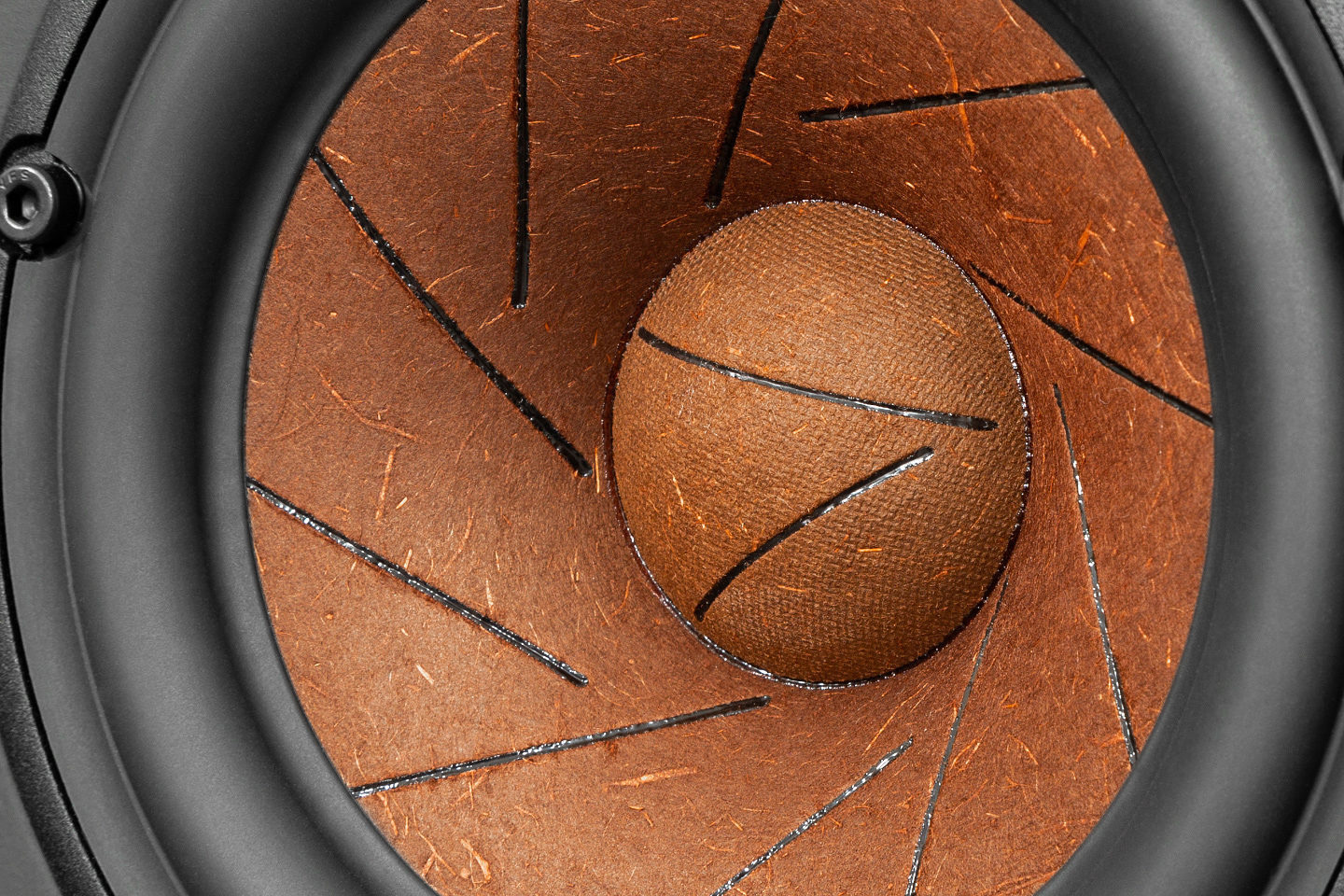
Another recording is Toshinori Kondo & IMA’s ”Brain War”. The system and acoustics do not mask the specifics of the recording and the character of the sound at all. Everything is heard objectively and in detail, but at the same time interestingly. The recording draws out the richness and fullness, although, I repeat, its shortcomings are audible. And one more thing: the acoustics do not soften or round anything. On the one hand, it sounds monitor-like honestly, on the other, it is not boring at all.
Then I put on No-Man’s album “Speak”. The atmosphere, the texture of the air, and the volume of the recording are heard well. Even with the correction that some of the air and volume were eaten up by the room, the result is much better than expected.
The sound has good detail, slightly accentuated musicality on the power delivery, and quite honest delivery in terms of tonal balance. The volume is not chamber, and what is even better – not blurred. Against the background of all the electronic effects, both vocal parts and quiet sounds and aftersounds are readable. As it seemed to me from the example of this and the previous recording, the acoustics are quite suitable for electronic music – I did not notice any gravitation, for example, only to pure instrumental music or vocals.
Overall, the delivery was confidently strong, clean, a little dryly neat, and moderately light. The acoustics convey rhythm very well – both fast and slow. Reezoldini Jericho S4 and Master M4 bookshelf speakers

The next album is My Dying Bride “The Light at the End of the World”. At a very low volume, the bass is a little less solid, but if you turn it up a little, not even to the average level, then the questions disappear. By the way, just loudly, the acoustics also play easily and assertively, but not at all flashy. It is completely unexpected to get such a sound from such little ones. For overloaded metal, the intelligibility and dynamics are quite enough, I did not notice any difficulties here.
At the same time, I decided to measure the work on test signals with improvised means – it turned out that from the 45 Hz declared in the passport, the acoustics (in a specific room) play smoothly and honestly, but below, of course, there is a decline. What you see on the screen here is completely consistent with what you hear.
From the orchestral music, I first listened to Stravinsky – “The Fairy’s Kiss”. The high level of detail did not surprise me, as did the absence of distortions. The sound is still rather light, and fused, and volume and scale are present. Fast moments are played confidently. Sometimes there is a feeling that after the main tones, the after-tones fade a little faster and a little more clearly, but they are not cut off, and do not disappear – there is no feeling of simplification. The stage is correct in proportions, wide and deep, but not very airy. Even at a very low volume, the acoustics play the classics well.

I liked Mahler’s First Symphony more for its stage, but the recording itself suggests this difference. And then everything depends on the tract: whether it is capable of conveying this difference or not. This one turned out to be capable. Otherwise, the music seemed a little more colorful, in the most insignificant nuances, but this is exactly what I would rather attribute to the influence of amplification and the ability of the acoustics to show this influence in the overall picture. First of all, it is important that even for such music there is enough dynamics, detail, and timbral authenticity. And the stage is not formally averaged, but, on the contrary, clearly different from recording to recording. Reezoldini Jericho S4 and Master M4 bookshelf speakers
Then I listened to the Reezoldini Master M4 on the same material. I will not give a detailed description of the listening but will focus on the difference – especially since it is obvious. Although there is certainly a similarity: when listening, you understand that you have acoustics from one manufacturer with a common character. The scale and the drawing of the scene are present, although the scene is a little more intimate. Moderately powerful, confident handwriting is also there. The sound did not become soft or, even more so, uncertain. But at the same time, it turned out to be more rounded and a little warmer in the highs.
The difference in tweeters is obvious, but the stitching in the range is equally high-quality. Some people will like the same jazz or vocals in this presentation more. The sound is slightly less nervous, but there is harmony. The detail is slightly lower, but there is velvetiness and melody. However, the same detail and dynamics, seemingly having changed qualitatively, have not changed much quantitatively: you can put on either metal or classical music and listen without a hint of a feeling of deprivation – this is just a slightly different nuance of the musical material.
Conclusions
Simply wonderful bookshelf speakers – with an unexpectedly big sound. There is character and style of presentation, there is obvious integrity. Perhaps one of those rare cases when there is nothing to seriously find fault with. Is it possible to do better? Perhaps, but not an order of magnitude and for a completely different price, which would be enough for several pairs of both Jericho and Master. In addition, it would not be better in everything at once.
It is not easy to find such a small acoustic system with similar scale and bass. And if you count all the factors and components of the sound, the task becomes even more difficult. So we can safely say that Reezoldini has created excellent acoustics. Outstanding in sound, not super-capricious in working in a room, and not super-demanding in amplification.
I especially liked that the acoustics are also beautiful and made to the proper level of quality, which is a great rarity for Russian developments and production.
Musical material
Hank Jones / The Great Jazz Trio — Last Recording / Eighty-Eight’s VRCL 18846 / SACD Stereo
Igor Stravinsky – Le Baiser De La Fee – Great Symphony Orchestra All-Union Radio and Television, G.Rozhdesvensky / Melody MEL CD 10 01833 / CD Stereo
Mahler – Symphonie No. 1 – Klaus Tennstedt, Chicago Symphony Orchestra / EMI – Esoteric ESSE90068 / SACD Stereo
My Dying Bride – The Light at the End of the World / Peaceville CDVILED 79 / CD Stereo
No-Man – ((Speak)) / Snapper Music – SDPCD 194 / CD Stereo
Thelonious Monk — Standards / Columbia CJ 45148 / CD Stereo
Toshinori Kondo & IMA — Brain War / King Records KICS 107 / CD Stereo
Specification
Price: Reezoldini Jericho S4 — 249,000 rubles, Reezoldini Master M4 — 199,000 rubles
Passport details
Reezoldini Jericho S4
Number of stripes: 2
Acoustic design: passive radiator
HF driver: 30mm soft dome with neodymium magnet
MF/LF driver: paper, 110 mm
Passive radiator: paper, 110 mm x 2
Crossover frequency: 2.4 kHz
Impedance: 4 Ohm
Frequency range: 45 Hz – 32.5 kHz
Sensitivity: 88 dB
Recommended power: 20-200 W
Dimensions (WxHxD): 180x360x252 mm
Weight: 11.4 kg (one column)
Reezoldini Master M4
Number of stripes: 2
Acoustic design: passive radiator
HF driver: 33mm soft dome with ferrite magnet
MF/LF driver: paper, 110 mm
Passive radiator: paper, 110 mm x 2
Crossover frequency: 2.4 kHz
Impedance: 4 Ohm
Frequency range: 45 Hz – 28 kHz
Sensitivity: 88 dB
Recommended power: 20-200 W
Dimensions (WxHxD): 180 (front panel – 239) x360x252 mm
Weight: 10.1 kg (one column)



